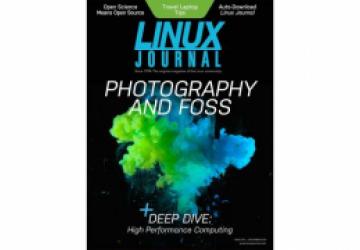The High-Performance Computing Issue

Since the dawn of computing, hardware engineers have had one goal that's stood out above all the rest: speed.
Sure, computers have many other important qualities (size, power consumption, price and so on), but nothing captures our attention like the never-ending quest for faster hardware (and software to power it). Faster drives. Faster RAM. Faster processors. Speed, speed and more speed. [Insert manly grunting sounds here.]
What's the first thing that happens when a new CPU is released? Benchmarks to compare it against the last batch of processors.
What happens when a graphics card is unveiled? Reviewers quickly load up whatever the most graphically demanding video game is and see just how it stacks up to the competition in frame-rate and resolution. Power and speed captures the attention of everyone from software engineers to gamers alike.
Nowhere is this never-ending quest for speed more apparent than in the high-performance computing (HPC) space. Built to handle some of the most computationally demanding work ever conceived by man, these supercomputers are growing faster by the day—and Linux is right there, powering just about all of them.
In this issue of Linux Journal, we take a stroll through the history of supercomputers, from its beginnings (long before Linux was a gleam in Linus Torvalds' eye...heck, long before Linus Torvalds was gleam in his parents' eyes) all the way to the present day where Linux absolutely dominates the Supercomputer and HPC world.
Then we take a deep dive into one of the most critical components of computing (affecting both desktop and supercomputers alike): storage.
Petros Koutoupis, Senior Platform Architect on IBM's Cloud Object Storage, creator of RapidDisk (Linux kernel modules for RAM drives and caching) and LJ Editor at Large, gives an overview of the history of computer storage leading up to the current, ultra-fast SSD and NVMe drives.
Once you're up to speed (see what I did there?) on NVMe storage, Petros then gives a detailed—step-by-step—walk-through of how to best utilize NVMe drives with Linux, including how to set up your system to have remote access to NVMe resources over a network, which is just plain cool.
Taking a break from talking about the fastest computers the Universe has ever known, let's turn our attention to a task that almost every single one of us tackles at least occasionally.
Photography.
Professional photographer Carlos Echenique provides an answer to the age-old question: is it possible for a professional photographer to use a FOSS-based workflow? (Spoiler: the answer is yes.)
Carlos walks through his entire setup in detail. The hardware he selected, the free and open-source software he uses and his workflow from end to end. This month's cover story is a complete blueprint for a real-world-tested, Linux-based photography setup—for professional or hobbyist usage. The next time one of your Mac or Windows friends tries to tell you "Linux can't be used for photography or design work", just point them right here.
And then drop the mic.
If no microphone is available, I recommend picking up whatever is immediately to your right and dropping that as if it were a mic. Red Swingline stapler. Cup of coffee. A cat. The point is, something needs to be dropped. Because Linux is awesome.
Subscribers, you can download your December issue now.
Not a subscriber? It’s not too late. and receive instant access to this and ALL back issues since 1994!
Want to buy a single issue? Buy the December magazine or other single back issues in the LJ store.









